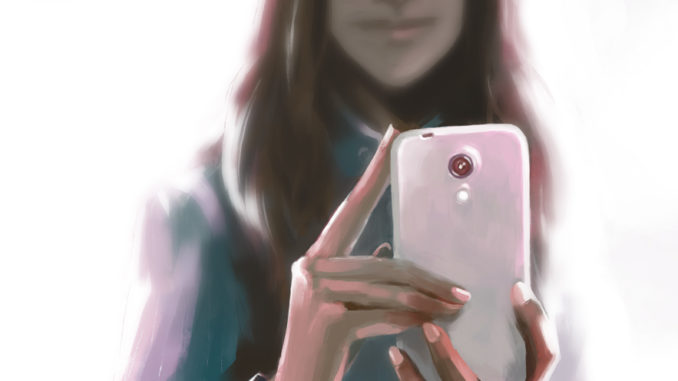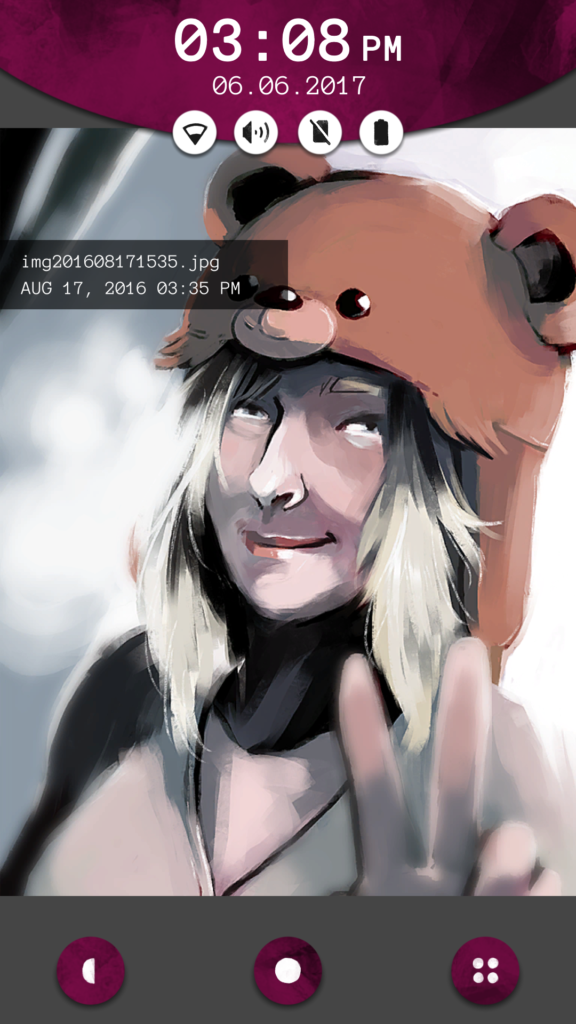
 Review Fix chats with Another Lost Phone: Laura’s Story developers Elizabeth Maler, Miryam Houali and Diane Landais, who discuss the creative process behind the game and what makes it a special one.
Review Fix chats with Another Lost Phone: Laura’s Story developers Elizabeth Maler, Miryam Houali and Diane Landais, who discuss the creative process behind the game and what makes it a special one.
About Another Lost Phone: Laura’s Story:
In Another Lost Phone: Laura’s Story players are tasked to find out what happened to Laura, a young woman who has apparently vanished without a trace. Stumbling on her lost phone, they need to discover what happened to her by uncovering crucial pieces of information and hidden passwords scattered among texts, apps, photo gallery and social networks. Another Lost Phone: Laura’s Story explores different aspects of Laura’s troubled life, touching upon social themes usually not discussed in games, and should be instantly recognisable to fans of the original A Normal Lost Phone. The game features a completely new story, including new puzzles and new mysteries to solve.
For More on the Game, Click Here.Â
Review Fix: What did the team learn most from A Normal Lost Phone?
Elizabeth Maler: We got a lot of feedback on A Normal Lost Phone from players and reviewers alike. We did and still do read most articles, watch let’s play videos and try to engage directly with players talking to us on social networks.
So we had negative feedback from some reviewers that was useful to understand how we might have gone too far. In A Normal Lost Phone, we wanted the player to witness events that had already happened to the main characters without being an actor in their life. But they could send drafts previously written by Sam (the main character), and at some point, send a picture to someone on a dating app. Actively impersonating Sam was rightfully seen as problematic by some, and those reviews made us realize it was a bad game design choice that went against our initial intent of putting distance between players and the game’s characters. That is why we tried to be more mindful of that in the next game.
We also got a pretty good idea of what had worked well on this first title: delivering a personal story in a nonlinear way through a phone interface, conveying an important message efficiently while trying to avoid being preachy or judgmental to the player, those are two example of things we wanted to build upon in a sequel. After seeing so many positive messages from people who were moved by A Normal Lost Phone, people who were in Sam’s situation or, on the contrary, people who identified their own intolerant behavior after playing the game, we knew we had to make another game. We wanted to keep talking about issues seldom approached in video games, because we realized we could actually help people.
Review Fix: In comparison, what was development like on this one?
Miryam Houali: The first version of A Normal Lost Phone was initially developed during a Global Game Jam by a team of strangers, while Another Lost Phone: Laura’s Story was thought from the start as a professional project and developed as such in the company we had founded since, Accidental Queens. As a consequence, it was much well planned, allowing us to be truer to our original intentions during the whole design process.
A Normal Lost Phone was first written from our experiences, opinions and beliefs as well as our friends’, and then proofread and improved thanks to the feedback from various LGBTQ people and organizations. For Another Lost Phone, we also took the time to do some research during the pre-production about the topics we wanted to talk about. We first tried to understand what were the most common misconceptions on those topics, with the help of several specialized organizations who helped us expand our knowledge on the subject. We wanted to debunk those misconceptions through Laura’s story, giving the players insight on her situation, and show them how they could recognize the same situation in their lives or those of their friends.
Then we also established what our intents were with this game and what they absolutely weren’t. We wrote those down on two pieces of paper and pinned them to the studio wall. Every time we wanted to add a new gameplay mechanic or make a change to the story, we had a look at the wall and asked ourselves: “does this serve or hinder the message we want to convey?†It helped us a lot to stay coherent in our design choices.
Review Fix: What makes Another Lost Phone: Laura’s Story special?
Diane Landais: We don’t really think Another Lost Phone is special. A Normal Lost Phone was, because at the time we made it, our first game combined innovation in its design with a story rarely told in video games. Other “lost phone†games have been released since, and we could have stopped there. But instead we took the opportunity to explore this concept further, improving the bits we didn’t like in the first one and raising awareness on another important subject matter. If Another Lost Phone manages to touch people at least as much as the first game did despite being sort of a sequel, that will probably make it special.
Review Fix: What’s special about the story?
Maler: We once again took a serious topic that we think is too overlooked and tried to raise awareness about it. Laura’s story could be your story or the story of someone you know, and we think that’s what makes it powerful and important.
Review Fix: As an indie studio, what do you think you do differently than the big studios?
Houali: As an indie studio, we have more artistic freedom to explore new way of designing games. We can take risks, experiment, and try to discover new concepts rather than rely on old tropes or formulas. Instead of trying to emulate big games but with a lot of filler content and unevenly developed gameplay ideas, we can explore short and simple ideas like “a game entirely taking place in a smartphone interface†and see how we could make a game with it!
We can do that because the financial risks are obviously much lower than on AAA productions. But also because the public expectations are not the same: people who are the most likely to enjoy playing our games want something different and refreshing. And while we want our games to be as accessible as possible, from a marketing standpoint they don’t have to appeal to millions of players to be profitable, so it’s easier for us to be bold in defending our values and make games about “difficult†topics.
Being small also allows us to stay close to our community. We try to engage as much as we can with our players, especially on social media and during events, and we can do so because we can talk freely about our work with them.
Review Fix: Who will enjoy this game the most?
Landais: Even if no prerequisite knowledge of A Normal Lost Phone is needed to play Another Lost Phone, fans of the first game will probably enjoy this one as well. It has a lot in common with its predecessor: it’s once again a game where the player finds a phone, and tries to understand what happened to its owner. It still relies on puzzles and investigation mechanics to unfold the mysteries that the phone holds. It’s still priced around 3$, still available on Mac, PC, Linux, Android and iOS, for a similar duration (around 1 to 3 hours), and still has a great soundtrack.
However, anyone with an appeal to narrative investigation games, games that tackle serious issues and deliver a message, or games that offer an original/innovative format could also enjoy Another Lost Phone.
Review Fix: What’s next?
Maler: While there are still promising paths to explore with the concept of a “Lost Phone†game, there are also more great ideas for innovative narrative games as a whole. We started this journey with the will to explore new forms of storytelling, and delivering powerful messages through this medium, and we intend to keep doing it – whatever form it may take.


Leave a Reply